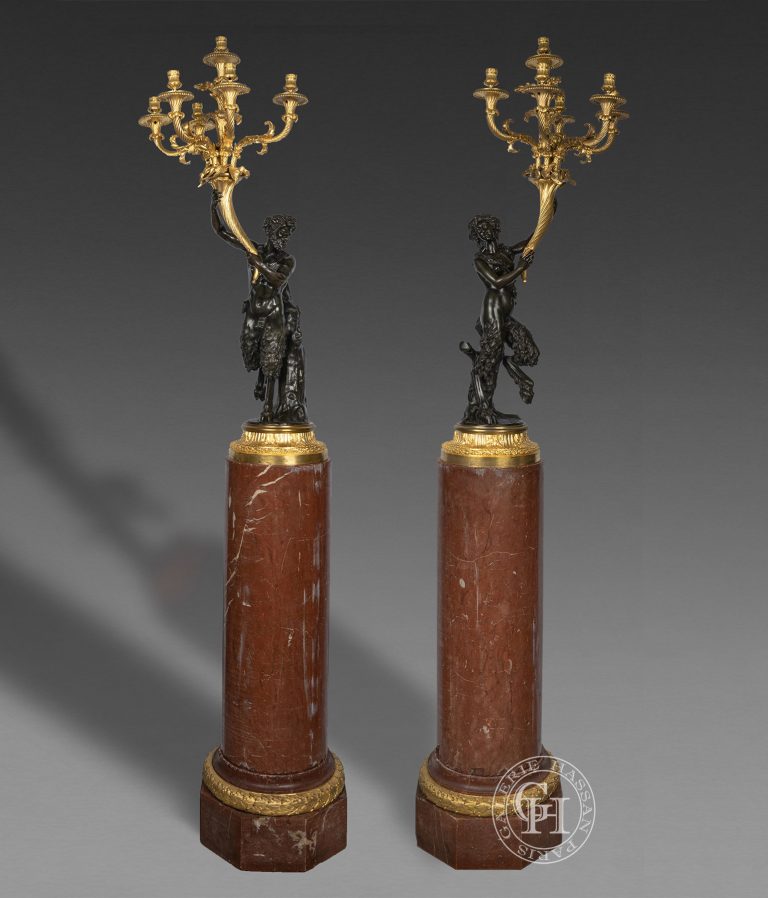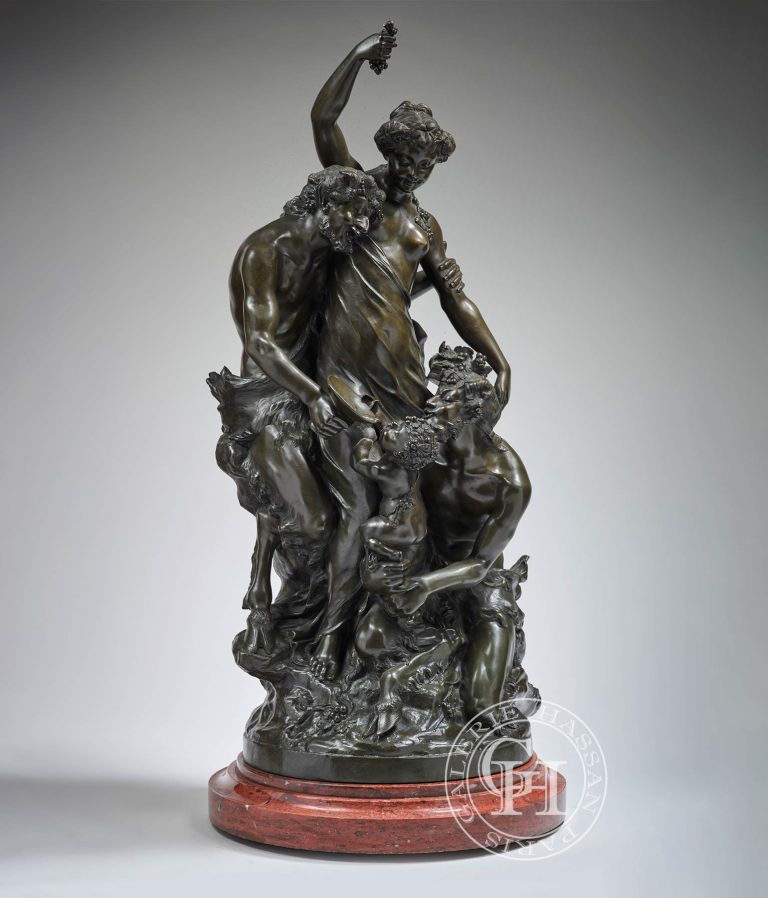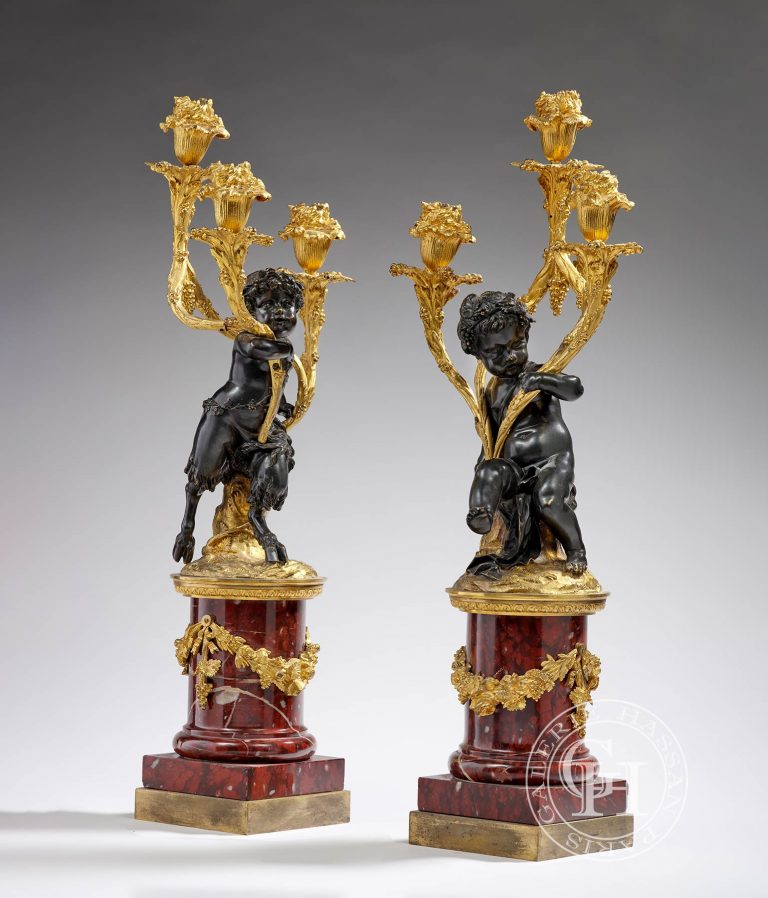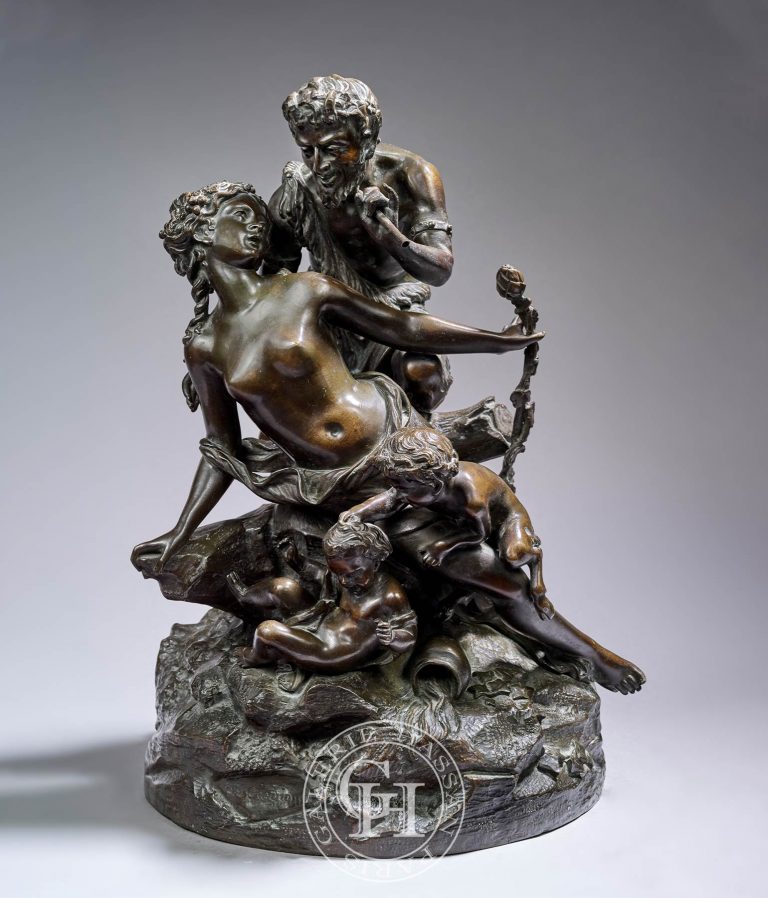Sculptor
Claude MICHEL known as CLODION
1738-1814
Claude Michel, known as Clodion, born the 20th of December 1738 inNancy, dead the 29th of March in Paris.Nephew of the Adams, student of Pigalle and son-in-law of the sculptor Pajou, he had remained in Rome and in Italy for nine wear where he discovered the Roman and Hellenistic terra cottas in the excavations of Pompeii. From then on, the antique art inspired Clodion who gotspecialized in terra cotta, ceramic sculpture and the decorative low-relief.He was one of the most representative French sculptors who worked in the rococo style. During Louis the XVIth reign, Clodion carried out important commissions with different relief techniques and sculptures in the round. He practiced the bronze moulding and the terra cotta baking and excelled in moulding mythological and allegorical figures, such as groups of dancing-girls, nymphs, intertwined satyrs and bacchantes or terra cotta dancing-girls. Clodion also left behind him instances of his master in marble work in which he also was an acknowledged expert.
In 1755 Clodion went to Paris and entered the workshop of the sculptor Lambert-Sigisbert Adam, his uncle. On his uncle’s death, he became a pupil of J.B. Pigalle. In 1759 he won the grand prize for sculpture at the Académie Royale de Peinture et de Sculpture and in 1761 he was awarded the first silver medal for studies of his models.
He left in Italy in 1762 and their shared a studio with Jean-Antoine Houdon. Member of the Académie de France in Rome, he was rapidly successful.
Therefore, he made marble works for the Empress Catherine II and for the duke of La Rochefoucauld. In 1771, Clodion came back in Paris and was crazily successful. He regularly exhibited at the Salon.
He cooperated with the architect Brongniart between 1775 and 1782 in order to make the stone decor of the hôtel financier Bouret de Vézelayet and of the couvent des Capucins frontage. He also made the decor for the bathroom of the hôtel de Besenval. The artist, one of the reference for monumental sculpture in the beginning of Louis the XVIth reign, made for the king a statue of Montesquieu which was destined to the Grande Galerie du Louvre. The marble statue was exhibited at the Salon in 1783.
He worked on public monuments in Paris, such as the execution of the marble relief of the arc de triomphe du Carrousel which represents the entrance of Napoleon in Munich.





